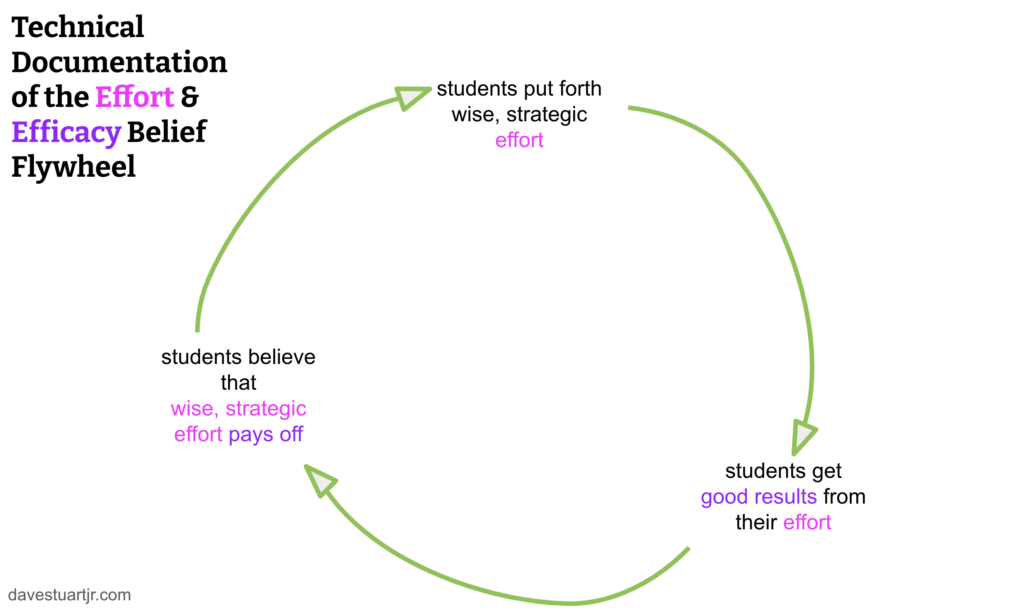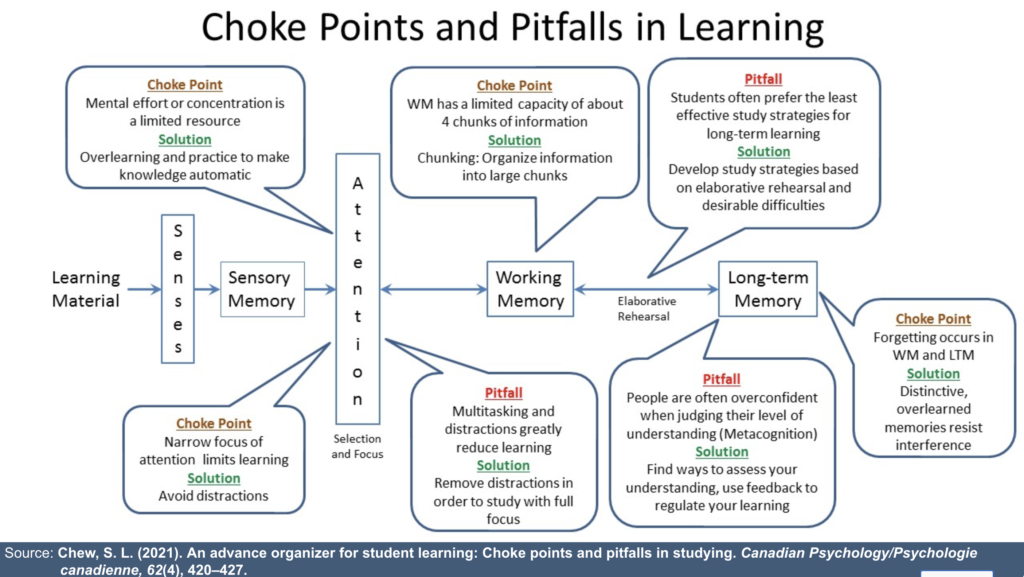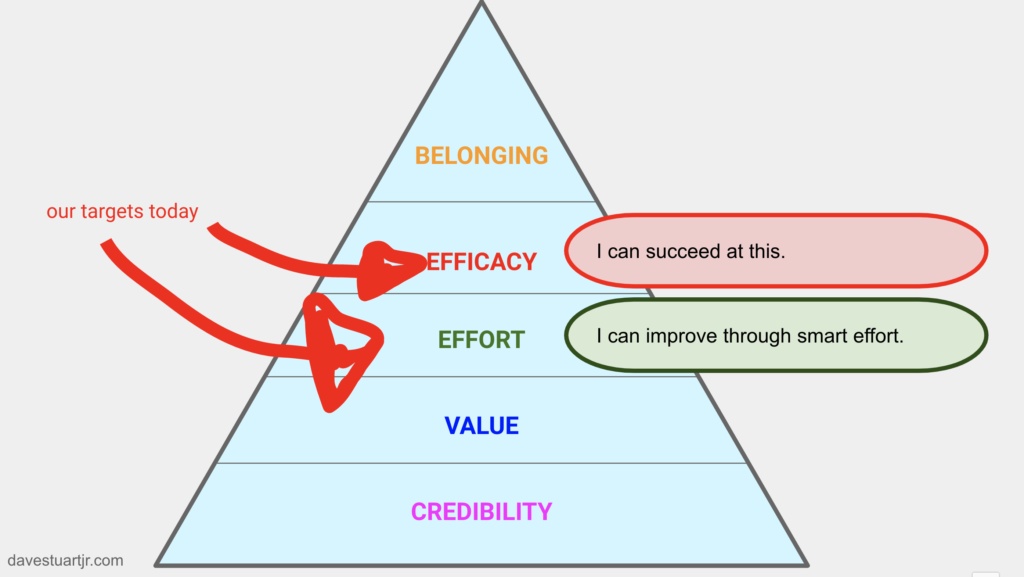The Effort and Efficacy beliefs are intermingled. They dance together. I've tried representing these with the following flywheel diagram:

The best way to begin to build the Effort and Efficacy beliefs in the hearts of our students, then, is to TEACH them what wise, strategic effort looks and feels like.
In order to do that, we need to help them understand how human learning works, what human learning's chief limitations are, and some of the common ways in which students waste time on effective effort.
Dave, that sounds like a lot
It is. It's a lot.
Which is why recently I was so blown away by researcher Stephen Chew's organizer for thinking strategically about student learning. It's overwhelming at first, but the longer I've sat with it, the more I've seen potential classroom applications.

In the weeks to come, I'm going to publish a series of blog articles that breaks these ideas down into 5-10-minute mini-lessons that I could use with my students.
Here's the complete list of lessons:
The key idea in all of this is that we're cultivating the Effort and Efficacy beliefs in the hearts of our students. We're proving to them — like chairs prove to us that we can sit on them — that they can improve through smart effort and that they can succeed at learning.

I'm looking forward to the series — how about you!?
Teaching right beside you,
DSJR
Cathie Loesing says
Don’t forget to add the lesson links above! Thanks for all you share!
Dave Stuart Jr. says
Perfect reminder — thank you Cathie! 🙂